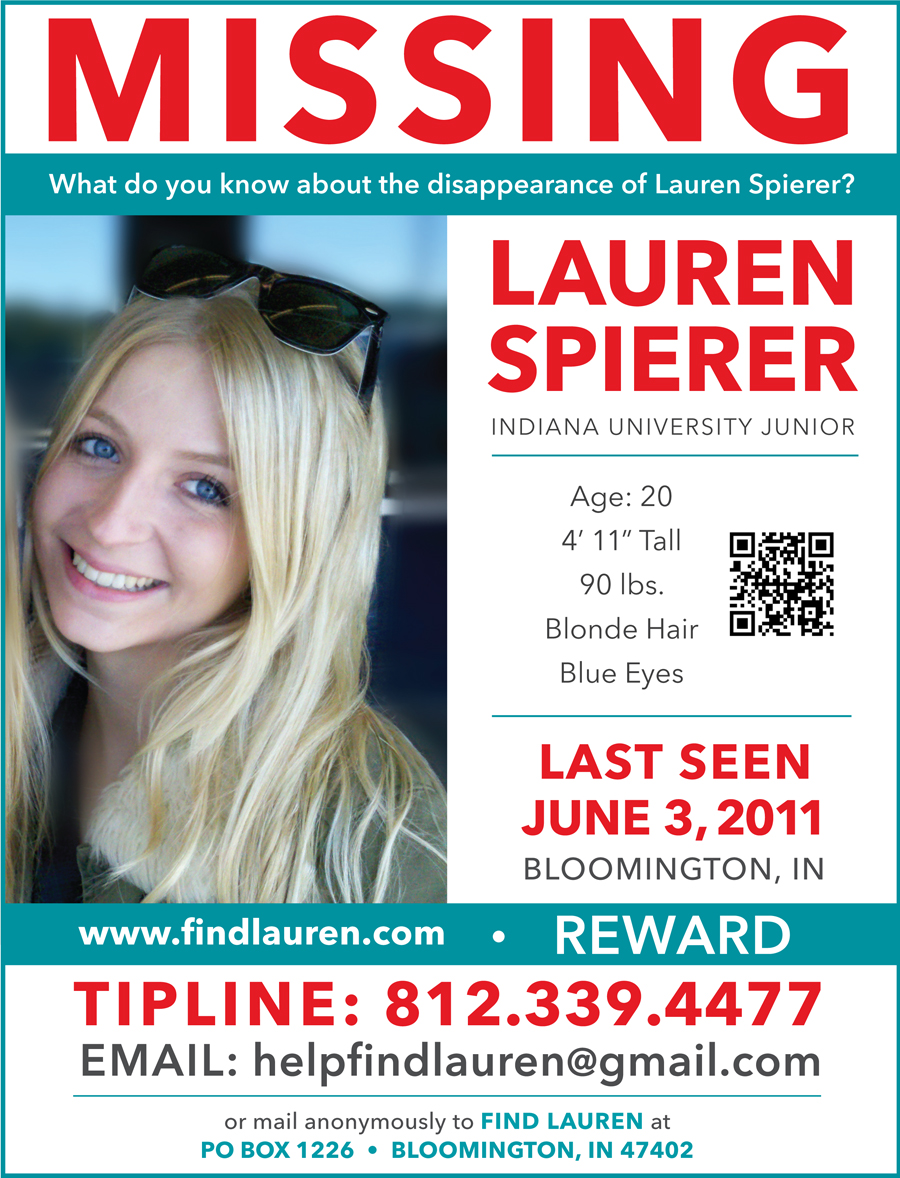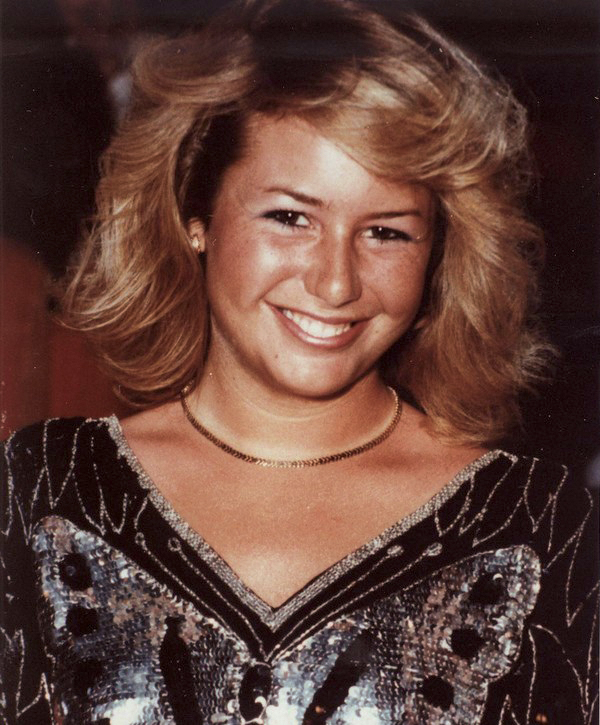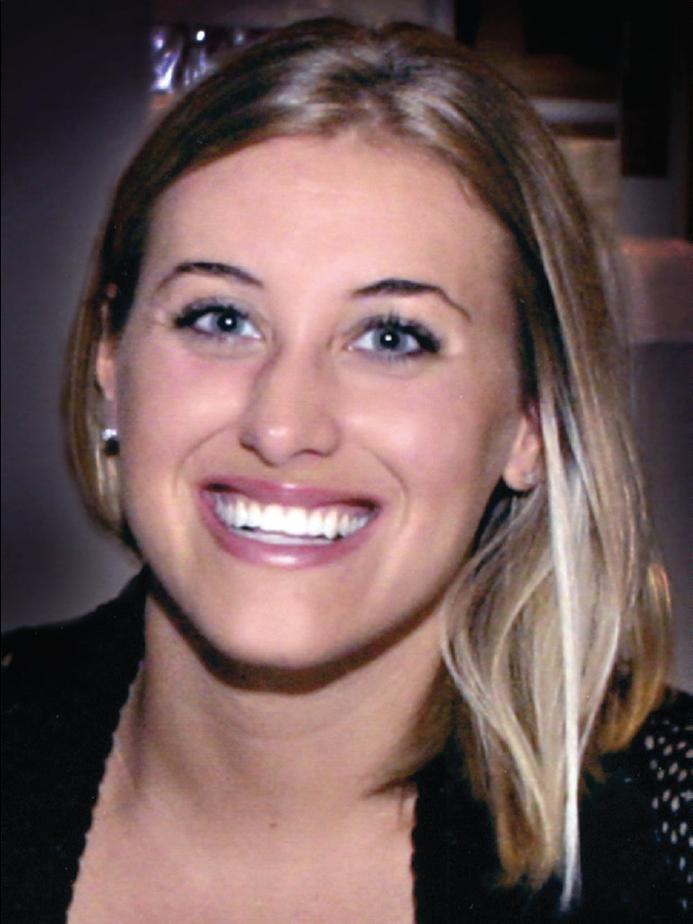Say hello to Laura and Joe
 Monday, November 30, 2009 at 9:14PM
Monday, November 30, 2009 at 9:14PM Never heard of them? You will.
A critical part of any homicide case, for both the prosecution and defense, is determining how and when the victim died. Necessary to this determination is finding the deceased’s body and determining at what time it was placed in the location it was found. Records in the possession of TES contain information directly pertaining to this determination.
- Jose Baez and Andrea Lyon
While the Casey pundits were screaming, “They went that-a-way,” and all eyes focused on the Memorandum of Law in Support of Defendant’sMotion in Limine to Introduce Prior Bad Acts and other Circumstantial Evidence Pertaining to Roy M. Kronk, I was looking there and somewhere else. Four days after the “perverted” Roy Kronk motion was filed, another one was, too. Quickly, does anyone know what it was?
Time’s up.
I am very well aware that 11 new motions and memorandums were filed on the day before Thanksgiving, but I think because this one was quietly introduced and sandwiched between Roy and the latest round, no one noticed it. I did. I might write something about those new court filings, but until then, I’ll be content with Richard Hornsby’s explanation in response to a comment query:
All of these motions are standard motions filed in Death Penalty cases. They are necessary to preserve constitutional objections in the event the United States Supreme Court later decides that certain death penalty procedures are unconstitutional.
However, the Statement of Particulars should have been filed a long time ago. It will help enlighten us as to what exactly the State’s theory is behind the First Degree Murder charge.
Fascinating! Not only are they not stupid - as you may suspect all of the defense’s motions are - but by filing them, it may elicit information from the state pertaining to what, exactly, the state’s theory is behind the first-degree murder charge. Aha, a meaningful purpose! Hmm. Perhaps, it will provide some insight into why she was charged with premeditation, as well. What I’d like to know, like Hornsby, is why did it take them so long?
Back to November 23. It was a Motion to Modify the Court’s Order on Defendant’s Application for Subpoena Duces Tecum for Documents in the Possession of Texas EquuSearch with an attached memorandum.Before I begin, most of you should be familiar with what a subpoena duces tecum is by now. If you aren’t, it’s a writ or process similar to the subpoena ad testificandum, which means to appear and give oral testimony for use at a hearing or trial, with the difference being that the witness must bring with them or produce to the court all books, papers, and what nots, in his hands, tending to elucidate the matter in issue. In other words, it’s a command to produce documents; to cough up the goods. (see: Florida Rule of Criminal Procedure 3.361(c)(1) )
Remember when one of Casey’s attorneys, Todd Macaluso, opened his mouth at a pretrial hearing in August, blurting out that they had proof their client was in jail when Caylee’s body was dumped in the woods? Yup, this is what it’s about.
“There is substantial evidence that we’ve found … that the body or remains of Caylee Anthony was placed there after Casey Anthony was locked up. It proves that somebody else placed the remains in the area.”
Do you recall that, because of it, everyone immediately jumped on Joy Wray’s case and assumed she was just that person who would testify for the defense? Who else could it be? Well, you’re wrong. It’s not her and I asked people on my blog to leave her out of it for this very reason. During a motion, memorandum and certificate of materiality of an out-of-state witness application filed back in July, Anthony’s attorneys asked Judge Strickland to allow them tointerview Tim Miller, the head of the search-and-rescue group Texas EquuSearch. They claimed his testimony would provide proof that it would have been impossible for Casey Anthony to dispose of Caylee’s body. That was the key that led me to believe it would be more than Wray because she was readily available, regardless of Tim Miller and EquuSearch. Duh. She lives here.
Because this motion filed on November 23 is a request to modify a court order, what was the original order and what does this motion seek to modify? In the original motion and later memorandum of law, the defense asked the court to certify Miller as a material witness, or at least force him to supply documents in the possession of Texas EquuSearch. TES had responded that “none of the thousands of searchers who volunteered with TES were ever at the exact spot where Caylee Anthony’s remains were found.” It went on to assert that, upon going through the documents from thousands of volunteers, TES identified only 32 who “searched the area between Hidden Oaks Elementary School and around where the remains were found.”
On August 29, Judge Strickland ordered TES to disclose to the state and defense those documents relating to the 32 people who performed searches in those areas.
In the recent filing, this is where it starts to get tricky and it gets to the crux of the matter…
The Defense, through its own independent investigation, has interviewed several TES searchers who not only searched the area where the remains were found, but who were not among the thirty-two (32) identified by TES.
Yes, you read that right. In this motion, the defense claims it has statements from TES searchers who were left off the list the court ordered Tim Miller to supply. Of course, Miller did supply the 32 he was ordered to release. What does all this mean? It means that, according to Baez & Co., more than 32 people searched the area between Hopespring and the elementary school along Suburban Drive and they signed statements saying so. The defense, through it’s own independent investigation, interviewed several TES personnel who not only searched the area, they were left off the list. The memorandum further states that none of the persons who searched the area where Caylee Anthony’s remains were later found reported anything unusual. They did not find a body, they did not notice any smells associated with a body, and they did not see any unusual animal or insect activity which might be indicative of a decaying body.
It accuses TES of being inaccurate because there were, indeed, searchers in the area where the toddler’s remains were found. It also accuses TES of withholding information that is most relevant to the defense. It asks the court to revise the previous order and to force TES to disclose all materials relating to the searches it conducted.
OK, just what and who did Miller omit and is it really all that relevant to the defense? I know for a fact that land east of Orlando is prone to flooding. How do I know? I lived there and I say so. I went to Suburban Drive on numerous occasions and shot video footage that chronicled each visit. I made it a point to go to those woods at key times of the year. I went in mid-August (see: Driving Miss Casey Part 1) and that represented the date when Roy Kronk first called 911. The woods were swampy and uninviting. When I shot my last video there (see: Suburban Drive Same Time Last Year) on November 17, the woods were quite dry, so somewhere between August 12 and November 17, the woods were clear enough to walk through, but remember, last year, the brush was higher, denser and no foliage had been removed. Were those woods clear enough to search in early September, 2008? I don’t know.
According to the memorandum attached to the motion:
On September 1, 2008, Joe Jordan, a volunteer for TES, along with approximately 30 other TES volunteers went to the Suburban Drive neighborhood to search for Caylee Anthony. Of those 30 volunteers, approximately five or six, along with Joe Jordan, searched the area near the wooden stockade fence on the south side of 8750 Suburban Drive. Along with Joe Jordan, and the other five or six searchers, were two dog handlers with dogs, Danny Ibison and a Panama City Sheriff’s Deputy. The area they searched was within feet of where Caylee Anthony’s remains were ultimately found. Joe Jordan documented his search in detail forms specifically provided by TES and submitted those forms to TES officials. Joe Jordan’s name was not among the thirty-two (32) searchers identified by TES and none of his reports were disclosed to the defense.
If true, this is some heavy stuff that we cannot just shrug off or take lightly. The memorandum further states:
On September 3, 2008, Laura Buchanan, a volunteer for TES, along with the team to which she was assigned, searched the area on Suburban Drive near where Caylee Anthony’s remains were ultimately found. The group searched the area for three to four hours, and Laura Buchanan personally searched near the wooden privacy fence and worked her way towards, and beyond where Caylee Anthony’s body was ultimately found. She did not notice anything unusual. There were no strange smells or any unusual animal or insect activity. It is Laura Buchanan’s opinion based on her observations that Caylee Anthony’s body was not there at the time of her team’s search. Laura Buchanan was not listed among the thirty-two (32) searchers identified as having been on Suburban Drive. Furthermore, no documents among those disclosed by TES, relate to a search on September 3, 2008.
There are 2 attached exhibits that back-up the defense’s claims, but it does not stop there. At issue is still the question of whether services provided by TES are legally considered services rendered and subject to Florida’s long-arm statute (see: Steel Joist Institute, Inc. v. J.H. Mann III, Inc.) by acting as an agent of law enforcement through its efforts to locate the missing child and were, therefore, conducting business within the state of Florida.
The test for determining whether private individuals are agents of the government is whether, in consideration of the circumstances, the individuals acted as instruments of the state. To determine whether a private individual acts as an instrument of the state, courts look to (1) whether the government was aware of and acquiesced in the conduct; and (2) whether the individual intended to assist the police or further his own ends. (quoted from: Florida Criminal Law Opinions, State v. Moninger)
The defense claims in its motion that the documents in question are kept in Florida at the office of Mark NeJame, counsel for TES, and thus subject to the powers of the court. It accuses TES of misrepresenting to the court - and Judge Strickland - the contents of the documents it possessed.
“[T]he items requested by the Defendant, through her counsel, would be immaterial and irrelevant. None of thousands of searchers, who volunteered with TES, were ever at the exact spot where Caylee Anthony’s remains were found,” emphasis added. The response then goes on to state that members of TES have combed through the thousands of documents and identified only thirty-two (32) volunteers who searched the Suburban Neighborhood. TES did not object to turning over the paperwork of these thirty-two (32) volunteers it identified, however, stated that disclosing documents pertaining to any other searches “would be immaterial and irrelevant to this issue.”
Here is where it really gets to the point:
- The signed statements from Joe Jordan and Laura Buchanan, included with this Memorandum of Law, indicate that there were several people who searched the Suburban Drive neighborhood but were not among the thirty-two (32) names disclosed by TES. (see Exhibits A & B below.)
- TES has not shown sufficient bar to requiring full disclosure.
One of the arguments the defense claims is that TES was in opposition of full disclosure based on a perceived “chilling effect” that would hamper the ability to obtain volunteers for future efforts. In other words, allowing the disclosure of searchers’ identities would subject them to media scrutiny and deter people from volunteering in the future. OK, that sounds reasonable, but the defense struck back by citing several volunteers that were willingly interviewed by the media, disclosing their names. Is that really an argument? The ones who did give their names were responsible for their own decisions to do so, not TES. On the other hand, people don’t volunteer on the condition that they are assigned to areas that will be relevant to a future criminal case. In a capital crime, and the defendant stands to die at the hands of the state, is a volunteer’s identity all that sacred?
Is the court obliged to satisfy the defense because of “inaccurate representations” by TES? The defense certainly thinks so and it’s asking the Honorable Judge Stan Strickland to revisit his previous order because of new and compelling information, only now, the defense is asking for ALL of the records. Of course, I could ask you for $100. Does that mean you’ll give it to me? I doubt it, but you might be inclined to give me $20. Or Joe Jordan and Laura Buchanan.
Exhibit A
Exhibit B














 LEGAL NOTICE
©David B. Knechel. All Rights Reserved. No portion of this site can be reproduced in it's entirety or in part without expressed written permission by the owner/administrator of this site in accordance with the Digital Millennium Copyright Act. Section 512(c)(3) of the U.S. Copyright Act, 17 U.S.C. §512(c)(3). The charges against defendants are mere accusations and the subjects are presumed innocent until found guilty in a court of law.
LEGAL NOTICE
©David B. Knechel. All Rights Reserved. No portion of this site can be reproduced in it's entirety or in part without expressed written permission by the owner/administrator of this site in accordance with the Digital Millennium Copyright Act. Section 512(c)(3) of the U.S. Copyright Act, 17 U.S.C. §512(c)(3). The charges against defendants are mere accusations and the subjects are presumed innocent until found guilty in a court of law.
Reader Comments